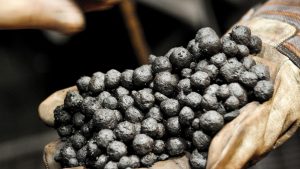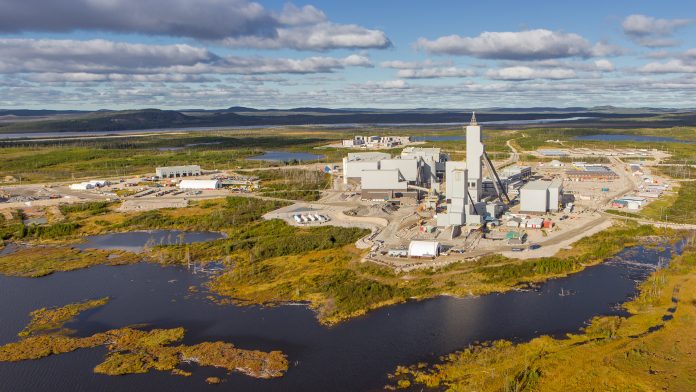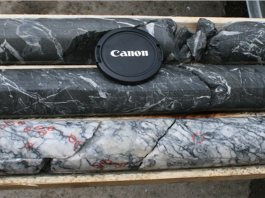The Québec Mining Association discusses Québec’s great potential to produce the critical and strategic minerals needed for a green and economically sustainable future.
Located in Central Canada, the province of Québec has great potential to provide the critical and strategic minerals needed for the future. Québec’s subsoil holds a variety of minerals – including copper, graphite, niobium, zinc, cobalt, nickel, titanium and lithium – which are crucial for the energy and technology transition.
Helping to support the development of Québec’s mining sector, the Québec Mining Association (QMA) is the voice for all mining companies producing critical and strategic minerals and their constituent mines, metallurgy companies, mining contractors and junior mining companies established in Québec. Founded in 1936, The QMA represents the province’s mining industry in meetings with government officials on policies regarding mining and encourages its members’ work in the area of the environment, health and safety, research and technological development, training, human resources management, community relations, etc.
The Innovation Platform spoke to the Québec Mining Association to find out more about Québec’s critical and strategic mining potential.
What potential does Québec have to provide the minerals needed for the future?
The mining sector in Québec has a lot of potential due to its great variety of critical and strategic minerals, its best practices, but also its people. Québec’s mining workforce is extremely qualified and has the will to make Québec a strong leader in the industry.
The mining sector in Québec is well known for its gold and iron ore, but now shows great potential in critical minerals, including lithium, nickel, niobium, graphite, rare earths, and copper. We are also convinced the Labrador Trough holds a key resource for the future, high-purity iron ore. These minerals are necessary for the growing battery sector and for the decarbonisation of activities.
What measures are in place to support the growth of Québec’s mining sector to help meet the demand for critical and strategic minerals? It is well known that Québec has rich deposits of the critical and strategic minerals needed for the energy transition. The government has adopted ‘The Québec Plan for the Development of Critical and Strategic Minerals (CSM) 2020-2025’. This plan supports the mining companies in the province extracting or working on extracting critical minerals on different levels: financial, research and development, promotion, etc.
The Québec government is eager to position its mining industry on the map as a responsible source of critical minerals and offers several tax incentives and measures to support exploration activities, which include the deduction of exploration and development expenses. The same goes for the Federal government, with the flow-through shares regime and the tax credit for resources.
There is no doubt that Québec’s mining industry can play a leading role in the energy transition, and these measures are crucial to draw investors’ attention to develop new mining projects in the province to meet the demand for CSM.
The government understands that we cannot look at the development of these mines as we do for iron ore or gold, as it is a totally different business model. Hence, the development of its battery strategy to incentivise battery manufacturers or components manufacturers to build their plants in Québec. This way, they can secure the demand for critical and strategic minerals.
How is innovation playing a role in supporting Québec’s mining industry?
It is widely known that Québec is a leader in terms of innovation in the mining industry and this characteristic distinguishes the Québec mining sector on the world stage.

From the exploration to the restoration stages, innovation enables the mining industry to operate more efficiently but also safely.
If we focus on the mining operations, there are several examples that could be cited here, such as the protocols in place for the recovery of mining waste; the innovative water treatment with bacteria (Agnico Eagle’s LaRonde Mining Complex is able to treat 90% of the used water); the Long Term Evolution (LTE) communication system which makes it possible to communicate more than 3km underground; or even the electric loaders driving themselves underground, since everything can be done remotely from a control room.
Innovation can take many forms in the mining industry, but when it is in the service of automation and connectivity, it allows for better work planning, more efficiency, and a safer environment for workers. In a nutshell, innovation allows the Québec mining industry to maximise its performance, while minimising its environmental footprint and preserving the workforce.
How are you helping to ensure sustainable and responsible development practices throughout Québec’s mining sector?
Mining companies really have environmental issues at heart and are working on reducing their environmental footprints but also improving their social impacts on communities. At the QMA, we require that our members implement the Towards Sustainable Mining (TSM) initiative – an ESG standard led by the Mining Association of Canada (MAC).
This sustainable development programme is a performance evaluation system that has gained worldwide recognition as it helps mining companies manage key environmental and social risks by applying best practices that exceed the legal and regulatory requirements. The initiative offers a set of tools and indicators to the companies to assess and manage the footprints when mining for critical and strategic minerals.
It includes eight protocols based on 30 indicators that support transparent and efficient communications with communities of interest and ensure that the main risks associated with mining for strategic and critical minerals are managed responsibly. Each year, mining companies must publish performance results for their facilities and state the improvement solutions to be put in place.
Also, the environmental legislative and regulatory framework is known to be stringent in Québec and Canada, which positions Québec as a leader in sustainable mining.
In Québec, there are a multitude of innovative projects that have contributed significantly to the reduction of greenhouse gas (GHG) emissions, the preservation of biodiversity, the regeneration of wastewater, and restoration at the end of mine life. At the QMA, we are enthusiastic for the future because we can really testify that our members are always eager to go beyond what they are obligated to do.
Are there any issues that need to be addressed to enable Québec to thrive as a critical and strategic minerals provider?
For now, the biggest issue is the harmonisation of the environmental authorisation process of the Federal government with those of the provinces.
When both the Federal and the Québec government have an agreement on a joint environmental impact assessment, it will allow shorter project development timelines.
At the QMA, we work collaboratively with the government to ensure that the critical and strategic minerals industry continues to develop within a competitive environment and a sustainable development perspective and continues to attract investors.
The QMA strongly believes that high-purity iron ore mined in the Labrador Trough should be recognised as a critical mineral since it helps to decarbonise the steel-making process. For that reason, the QMA has undertaken discussions with both governments in that effect.
Please note, this article will also appear in the fourteenth edition of our quarterly publication.









